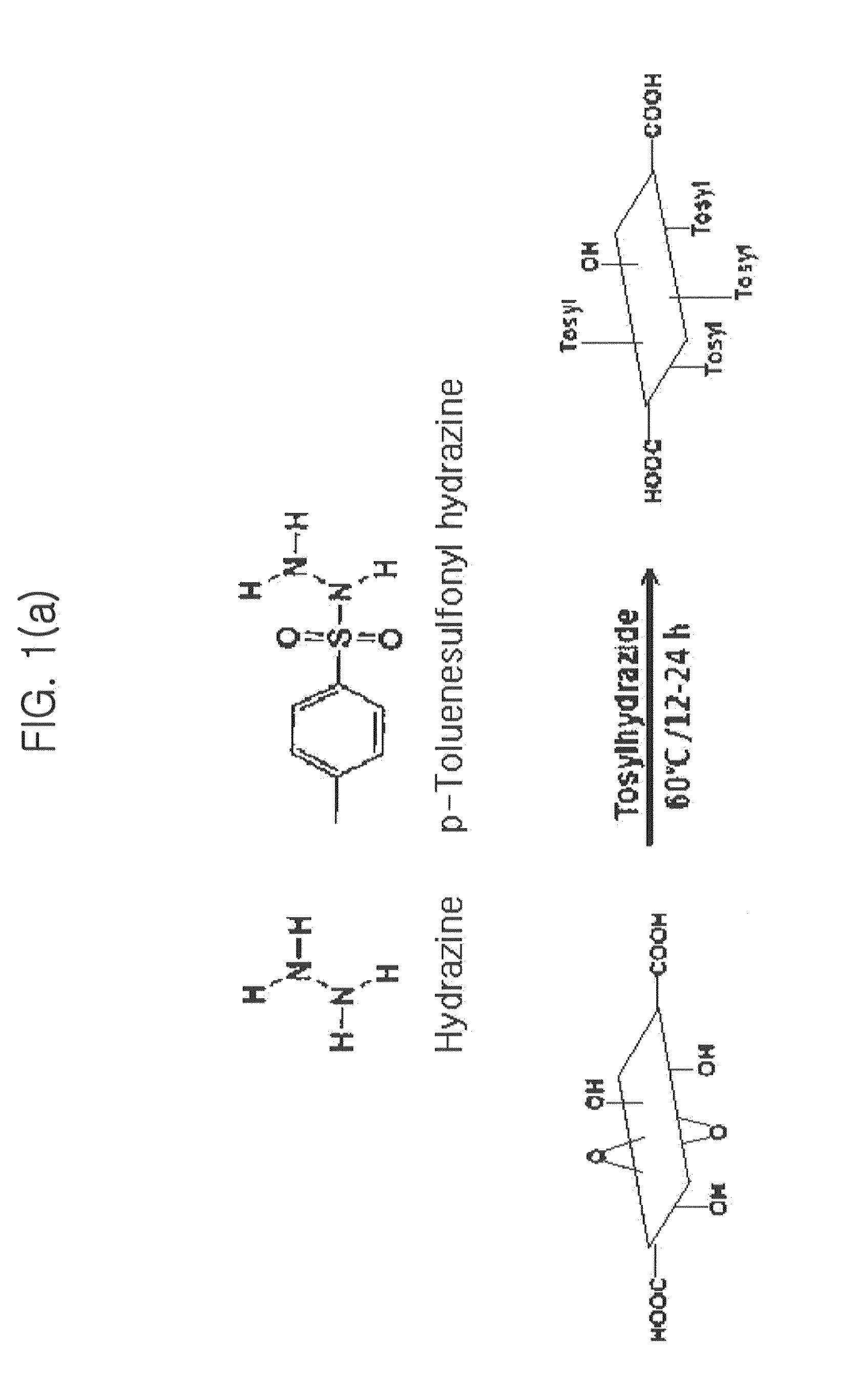Preparation method for reduced graphene oxide using sulfonyl hydrazide-based reducing agent and optoelectronic devices thereof
a technology of graphene oxide and reducing agent, which is applied in the field of graphene thin film and a preparation method for fabricating an optoelectronic device, can solve the problems of limiting the application of forming a molecular monolayer on the surface of ito, affecting the stability of organic solar cells, and affecting the life of organic solar cell devices, etc., to achieve the effect of enhancing the life span and high density
- Summary
- Abstract
- Description
- Claims
- Application Information
AI Technical Summary
Benefits of technology
Problems solved by technology
Method used
Image
Examples
example
[0032]The present invention will be described in detail through an example. However, the example are merely examples for explaining the present invention, and the present invention is not limited thereto.
[0033]As raw materials of the present embodiment, polystyrene sulfonate (PSS) (Mw 70,000 g / mol), potassium permanganate, methylene chloride (MC), N,N-dimethylformamide (DMF), hydrogen sulfonate (98%), p-toluenesulfonylhydrazide, propylene carbonate (PPC), dimethylsulfoxide (DMSO), and methanol were purchased from Sigma-Aldrich Corporation and used, and dialysis kig (molecular cutoff membrane MW: 2000˜3000 g / mol) was purchased from spectrumlab. Ultrapure water (18.3 MΩcm−1) was purified from Human ultra Pure system and used.
[0034]Synthesis of Reduced Graphene Using P-Toluene Sulfonyl Hydrazide
[0035]0.1 g of graphene oxide prepared according to the Hummers method was dispersed in 100 mL of ultrapure water, 2 g of p-toluene sulfonyl hydrazide was dissolved in an 10 mL of ethanol, and t...
PUM
| Property | Measurement | Unit |
|---|---|---|
| thickness | aaaaa | aaaaa |
| temperature | aaaaa | aaaaa |
| concentration | aaaaa | aaaaa |
Abstract
Description
Claims
Application Information
 Login to View More
Login to View More - R&D
- Intellectual Property
- Life Sciences
- Materials
- Tech Scout
- Unparalleled Data Quality
- Higher Quality Content
- 60% Fewer Hallucinations
Browse by: Latest US Patents, China's latest patents, Technical Efficacy Thesaurus, Application Domain, Technology Topic, Popular Technical Reports.
© 2025 PatSnap. All rights reserved.Legal|Privacy policy|Modern Slavery Act Transparency Statement|Sitemap|About US| Contact US: help@patsnap.com



